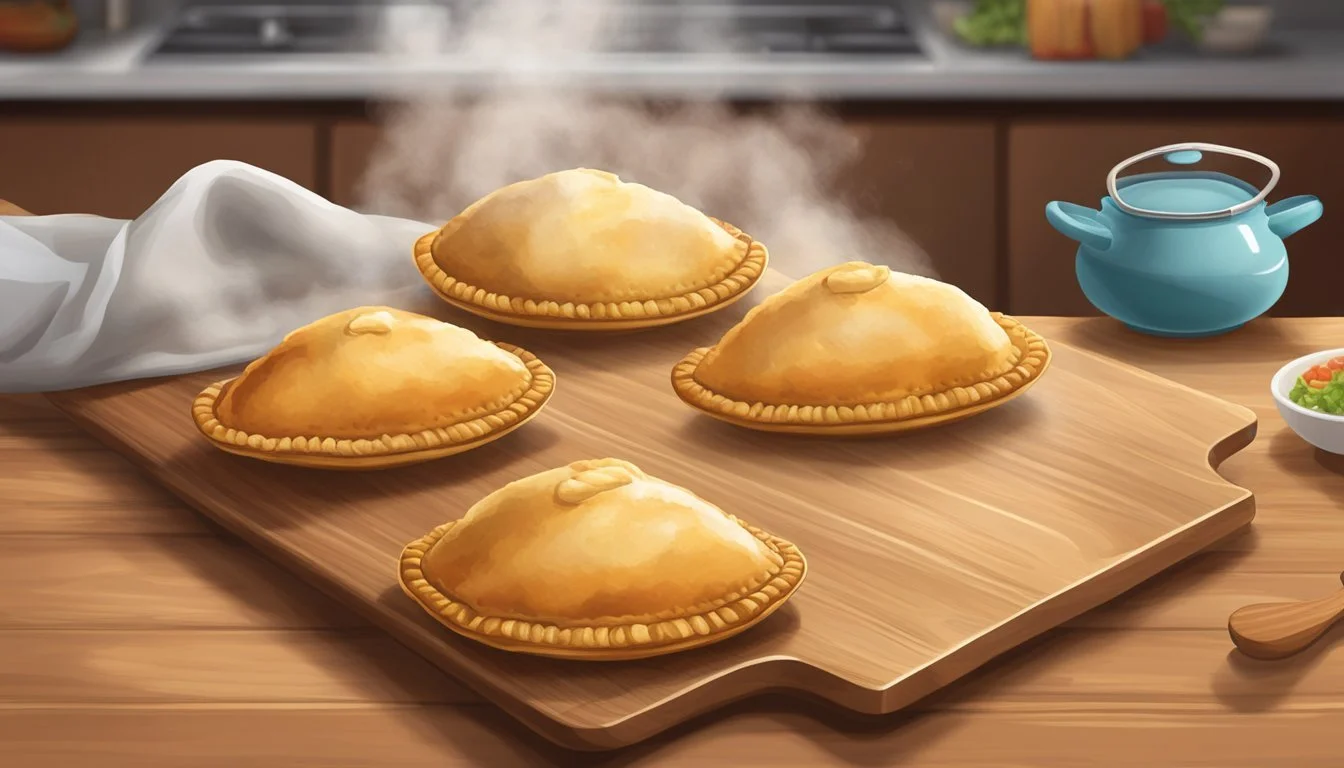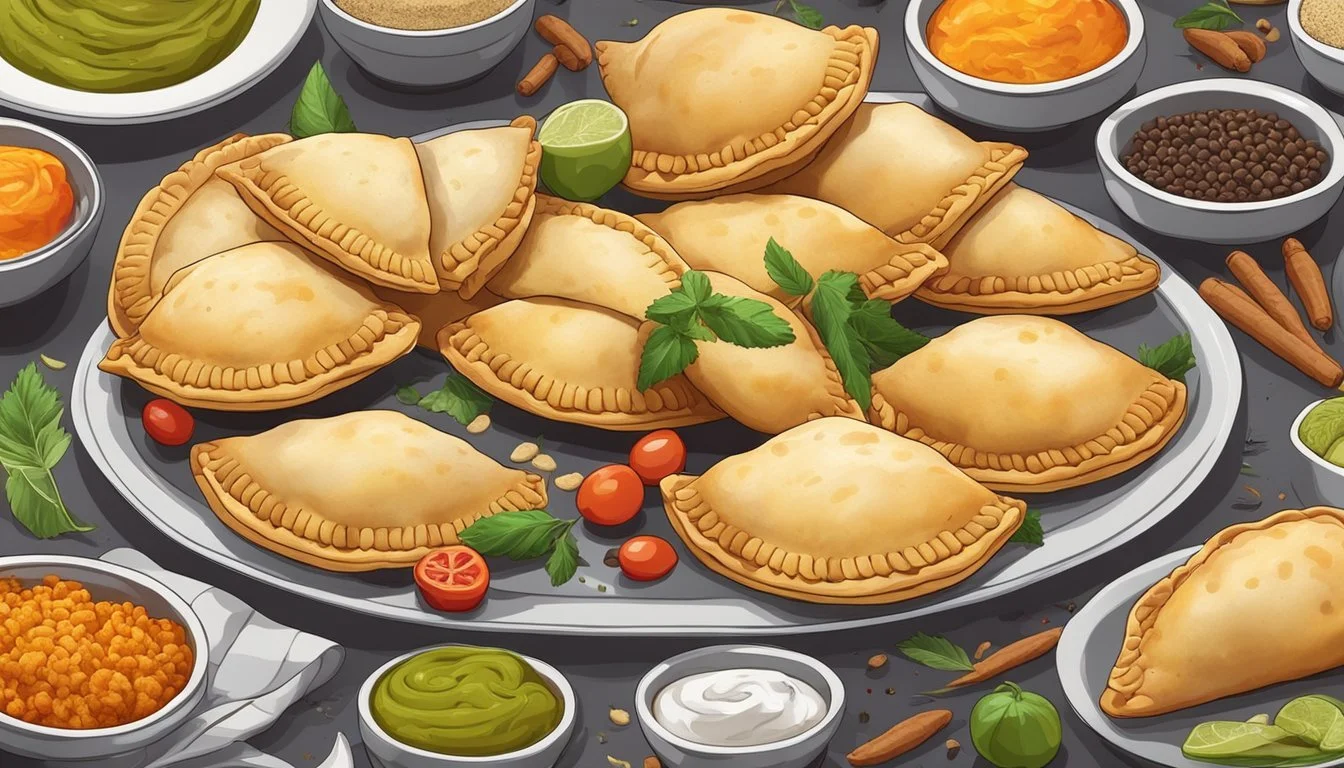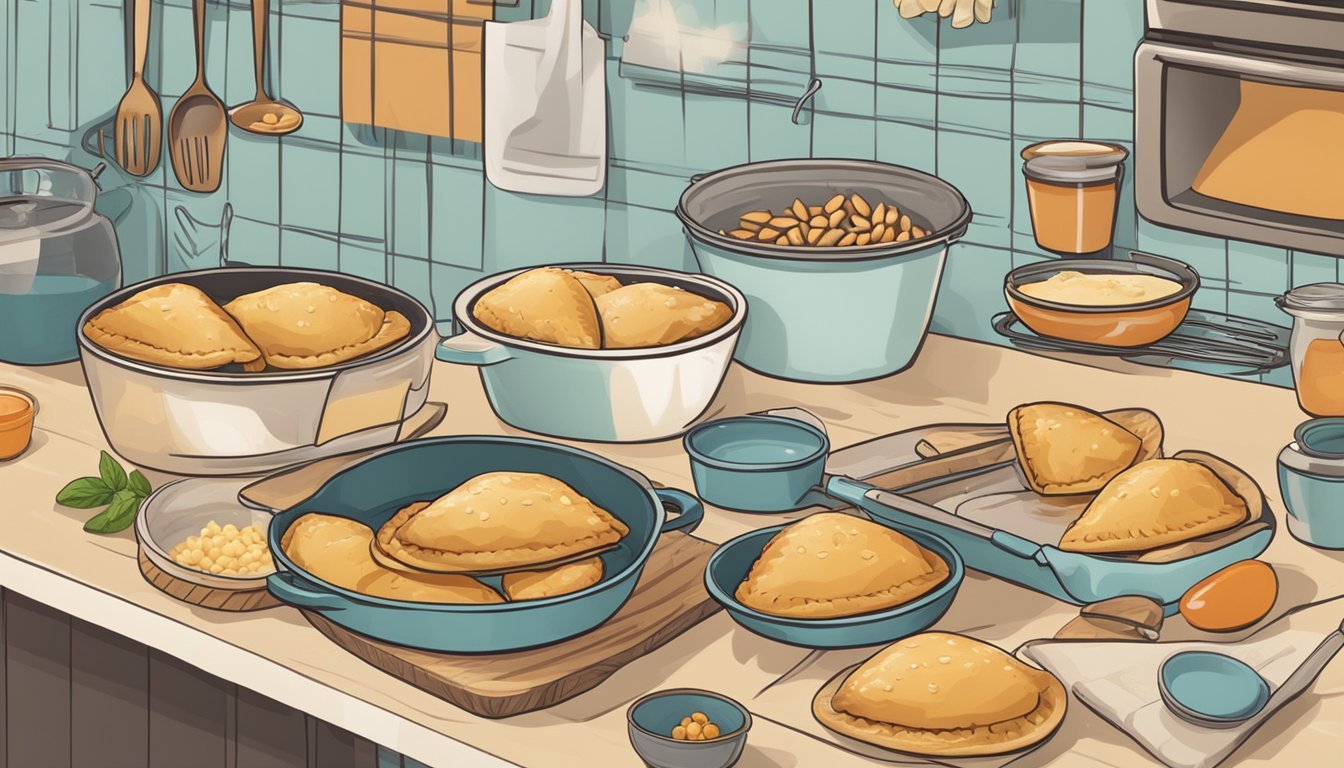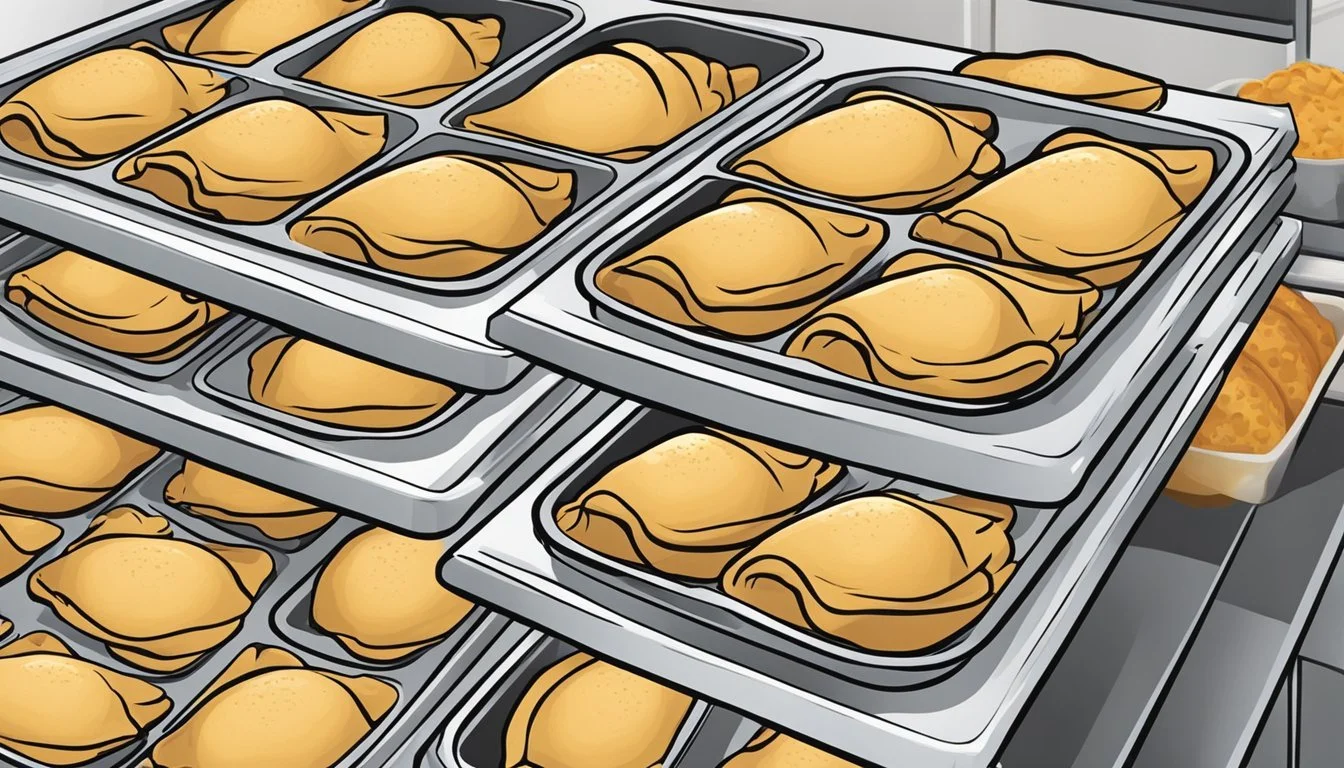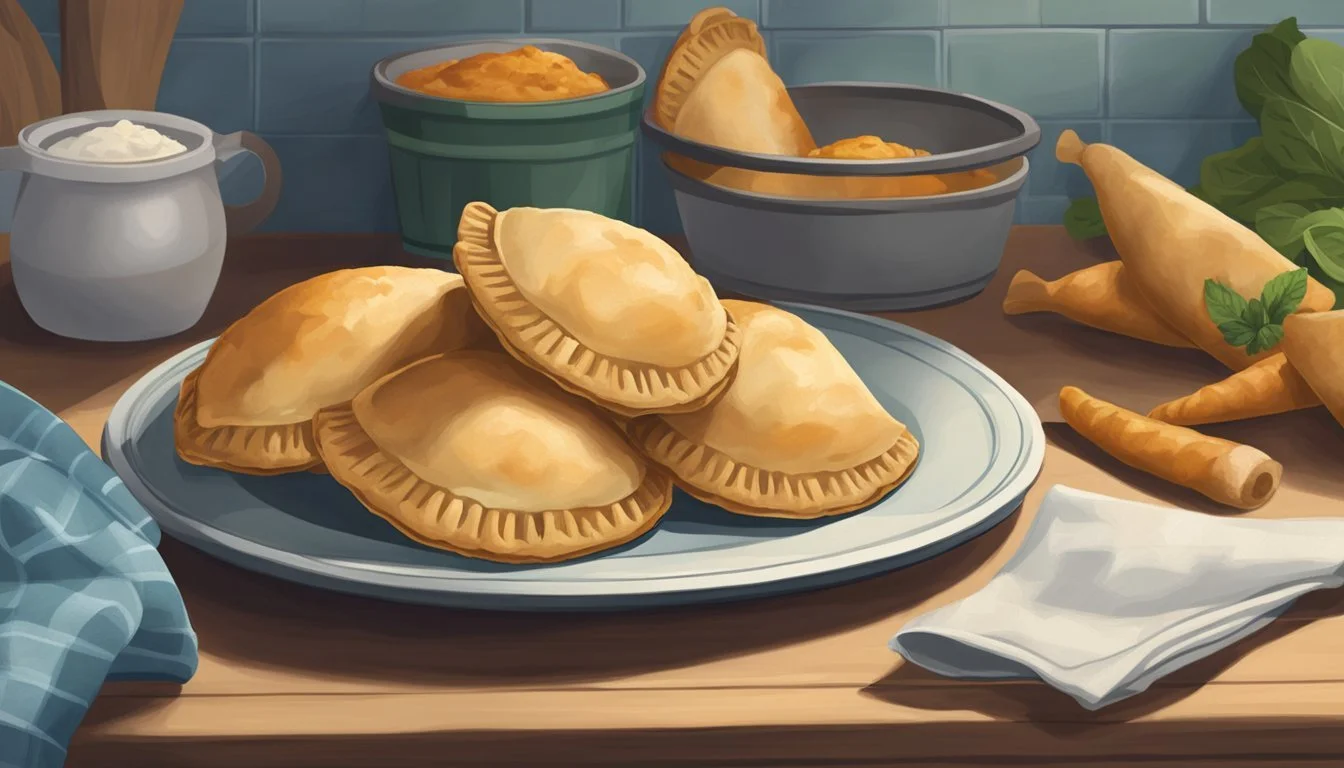How Long Do Freshly Prepared Empanadas Last?
Shelf Life and Storage Tips
Empanadas, the savory pastry pockets cherished across Latin America and beyond, are as diverse as they are delicious. Ensuring these delicacies are enjoyed in their best form is all about understanding how long they maintain freshness. Freshly prepared empanadas can last for varying durations, depending on whether they are stored in the refrigerator or freezer, and if they have been cooked prior to storage.
When stored in the refrigerator, cooked empanadas remain good for consumption for approximately 3-4 days. It's crucial to keep them in an airtight container to maintain their quality and prevent them from absorbing other flavors. Uncooked empanadas, on the other hand, should ideally be enjoyed within 2-3 days when refrigerated to ensure the best taste and texture.
Freezing offers a longer-term solution, extending the shelf life of both cooked and uncooked empanadas. Frozen uncooked empanadas can be stored for up to three months, and cooked empanadas can last for a similar duration when kept at a consistent 0°F (-18°C). Properly wrapping them to prevent freezer burn is important to retain their flavor and quality until they are ready to be baked or reheated.
Empanada Essentials
The foundation of exquisite empanadas lies not only in their preparation but also in the choice of prime ingredients and the meticulous construction of their dough and filling. Mastery of these elements is crucial for anyone looking to create the perfect empanada experience.
Understanding Empanadas
Empanadas are a staple in Latin cuisine, featuring a folded pastry that is typically stuffed with savory fillings, although sweet versions are also popular. Originating from Latin America and Spain, they are enjoyed for their versatility and handheld convenience.
Common Filling Components:
Meat: Beef, chicken, pork
Cheese: Varieties that melt well
Vegetables: Peppers, onions, tomatoes
Sweet Filling: Fruit jams, dulce de leche
Selecting Ingredients for Empanadas
Choosing high-quality ingredients is essential for achieving the best flavor in empanadas. Fillings can be customized, but one should opt for fresh vegetables, premium cuts of meat, and high-quality cheeses to ensure a flavorful and satisfying result.
Ingredient Recommendations:
Meat: Go for ground or finely chopped cuts.
Cheeses: Consider melting characteristics; cheddar or mozzarella are excellent choices.
Sweet Fillings: Use fresh fruit for jams or quality dulce de leche for a sweet twist.
Preparing the Dough and Filling
For the dough, achieving the right texture is critical — it should be flaky yet sturdy enough to hold the filling without breaking. Ensure both the dough and the filling are well-chilled before assembly to prevent the pastry from becoming sticky and difficult to handle.
Dough Preparation Tips:
Use cold ingredients to keep the dough manageable.
Chill dough before rolling out for best results.
Filling Preparation Tips:
Cook meat thoroughly and season well.
Let fillings cool before constructing empanadas to maintain dough integrity.
Baking and Frying Techniques
Preparing empanadas involves two popular methods: baking and frying. Both techniques aim to achieve a golden brown, flaky exterior, but they differ in cooking time and texture.
How to Bake Empanadas
Baking empanadas is a healthier alternative to frying and it emphasizes the pastry's flakiness. For optimal results, one should:
Preheat the oven to between 350°F and 400°F (175°C and 200°C).
Arrange the empanadas on a parchment-lined baking sheet.
Brush the tops with an egg wash or oil for a golden finish.
Bake for about 15-25 minutes or until they are golden brown.
The exact temperature and baking time can vary based on the recipe, so one should keep an eye on the empanadas as they bake to ensure they do not overcook.
How to Fry Empanadas
Frying empanadas produces a crispy texture and rich flavor. To fry empanadas effectively:
Heat oil in a deep fryer or a large, deep skillet to medium-high temperature (about 360°F or 180°C).
Place the empanadas carefully into the hot oil without overcrowding.
Cook for about 2-4 minutes on each side or until they reach a deep golden-brown color.
One must monitor the empanadas closely during frying, as the high temperature can quickly darken them beyond the desired golden-brown stage.
Storing Freshly Prepared Empanadas
Proper storage techniques are essential in preserving the taste and texture of freshly prepared empanadas. Detailed here are the critical steps for cooling and wrapping these delicacies, and the proper methods for refrigerating and freezing them.
Cooling and Wrapping Tips
Before one stores empanadas, they must be brought to room temperature to prevent condensation, which can lead to a soggy crust. They should be spread out on a wire rack to cool efficiently. Once cooled, empanadas should be wrapped individually in plastic wrap, aluminum foil, or placed in an airtight container lined with a paper towel to absorb any excess moisture. This step helps to maintain the crispness of the pastry.
Storing Empanadas in the Refrigerator
To refrigerate empanadas, they should be placed in a single layer within a plastic container or wrapped securely to prevent air exposure. The refrigerator should be set at a consistent temperature to ensure the empanadas remain fresh. For optimal freshness, one should consume refrigerated empanadas within 3-4 days.
Freezing and Thawing Empanadas
Freezing:
Wrap: Use aluminum foil or plastic wrap to wrap each empanada individually.
Container: Place wrapped empanadas in a freezer bag or airtight container.
Storage: Label container with the date; empanadas can be stored in the freezer for up to three months.
Thawing:
Refrigerator: Thaw frozen empanadas in the refrigerator overnight.
Room Temperature: For faster thawing, place them on the counter for a few hours.
Paper Towel: If there's any condensation, a paper towel can help keep the empanadas dry.
Avoid refreezing thawed empanadas as this can deteriorate their quality. When reheating, ensure they are heated through to the center before serving.
Maximizing the Shelf Life
Proper storage techniques are imperative to maximizing shelf life and maintaining the quality of freshly prepared empanadas. Attention to temperature management and protective measures can prevent spoilage and freezer burn, ensuring your empanadas remain as fresh as possible.
Preventing Freezer Burn
Wrap Individual Empanadas: To protect empanadas from freezer burn, individually wrap them in plastic tightly, minimizing exposure to air.
Use Heavy-Duty Freezer Bags: Once wrapped, place empanadas in heavy-duty freezer bags, squeezing out excess air before sealing.
Label with Dates: Labeling bags with the freezing date helps track how long the empanadas have been stored, staying within the optimal consumption window.
Maintaining Freshness
Refrigeration: Store empanadas in the refrigerator on a shelf in an airtight container to maintain freshness; consume within 2-3 days for best quality.
Manage Moisture: To prevent condensation and moisture buildup, which can degrade freshness, ensure the container is sealed properly.
Safe Thawing: When ready to use, thaw empanadas in the refrigerator, not at room temperature, to maintain food safety standards.
Reheating Techniques
Proper reheating techniques can ensure that empanadas retain their original flavor and texture. It's crucial to choose the appropriate method depending on the available appliances and the time at one's disposal.
Using the Oven
For oven reheating, one should preheat the oven to 350°F before placing the empanadas on a baking sheet. It's vital to arrange them in a single layer for even heating. Timing is key; they typically require 10-15 minutes to heat thoroughly. To prevent drying, one can cover the empanadas with foil.
Temperature: 350°F
Time: 10-15 minutes
Microwave Reheating Tips
Microwave reheating is the quickest method, albeit with a risk of soggy crusts. It's advised to set the microwave to a medium power setting to evenly warm the empanadas. Microwave-safe plates should be used, and a damp paper towel can be placed over the empanadas to maintain their moisture.
Power Setting: Medium
Time: Usually less than 2 minutes
Reheating on the Stove
For those preferring a crispy crust, reheating on the stove is ideal. One should use a skillet over medium heat and add a small amount of oil. The empanadas should be turned occasionally for an even crisp. A thermometer can check the internal temperature, ensuring they are warmed to at least 165°F.
Temperature: Medium Heat
Time: Few minutes on each side
Internal Temperature: 165°F
Enjoying Empanadas
Empanadas offer a versatile dining experience—ideal as a filling meal or a light snack. They are a staple in Latin American cuisine and can be made ahead, making them a popular choice for gatherings or simply enjoying leftovers.
Serving Suggestions
Empanadas can be served either hot or at room temperature, depending on preference. They are typically best enjoyed when fresh, as this is when their pastry is most flaky and their filling most flavorful. For those who have made empanadas in advance, reheating them in an oven at 350 degrees Fahrenheit until they reach a golden-brown color ensures a delicious, crisp exterior.
Meal:
Lunch/Dinner: Serve with a side salad or rice to provide a balanced meal.
Snack:
Quick Bites: Easy to handle, they make a great finger food option.
Party:
Appetizers: Mini empanadas are perfect as appetizers for events.
Make-ahead/Leftovers:
Consume make-ahead or refrigerated empanadas within 2-3 days for optimal taste.
Pairing with Other Foods
The flavors of empanadas pair exceptionally well with a variety of accompaniments:
Sauces:
Chimichurri: A tangy parsley-based sauce.
Salsa: Adds a juicy spice to each bite.
Sour Cream: For a soothing creamy contrast.
Beverages:
Wine: Red or white, depending on the filling.
Beer: A light lager complements the richness of the meat.
Soft Drinks: A fizzy soda balances the savory flavors.
They also complement many side dishes from Latin cuisine:
Side Dishes:
Black Beans: A staple in Latin American countries, they add substance.
Plantains: Offer a sweet contrast to savory fillings.
Rice: A side of rice can absorb the robust flavors.
By considering these serving suggestions and pairings, empanadas can be transformed from delectable treats into a memorable culinary experience.
Tips for the Best Empanada Experience
Storage: For the best texture and flavor retention, empanadas should be stored in airtight containers. They can last 3-5 days in the refrigerator or up to 3 months in the freezer. One should avoid stacking empanadas in the container; instead, they can be placed in a single layer to prevent sogginess.
Reheating: When reheating empanadas, a preheated oven is preferable. An oven temperature of 350°F (175°C) for 10-15 minutes can help preserve the crispy exterior and internal warmth of the empanadas. It's essential not to microwave them, as this can lead to a soft and unappealing texture.
Frying Tips: If frying empanadas, one must ensure to drain the excess oil post-frying by placing them on a paper towel. This process keeps the crust crispy and prevents a greasy aftertaste.
Egg Wash: For a golden sheen, empanadas can be brushed with an egg wash before baking. This not only enhances their appearance but can also improve the flavor profile.
Avoiding Sogginess: Placing empanadas on a tray lined with parchment paper when baking or after frying gives them room to breathe, which is critical for maintaining the ideal texture.
By adhering to these practices, empanadas can provide a savory, fresh, and satisfying experience long after they've been prepared.

